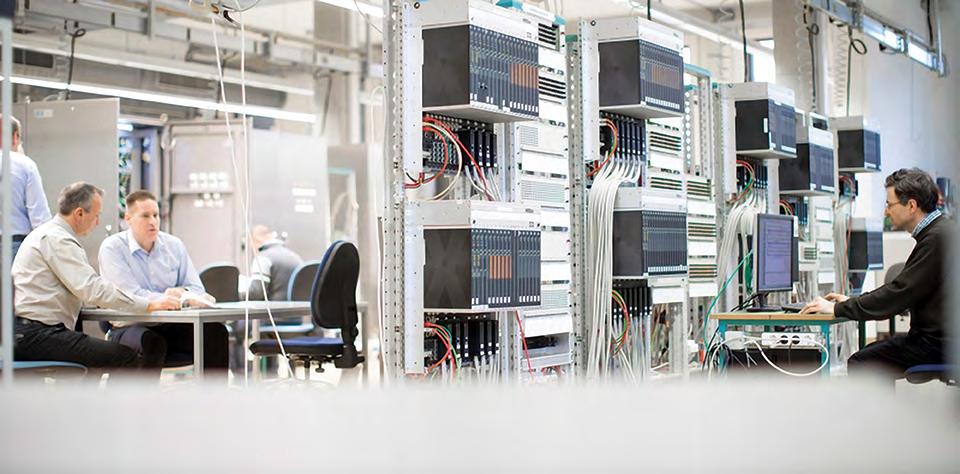
4 minute read
Safety and Cybersecurity for Rail Networks in Asia Pacific Asia Pacific is slowly getting its economy back to speed, which means having to move large numbers of people, once again, safely and expeditiously
SAFETY AND CYBERSECURITY
FOR RAIL NETWORKS IN ASIA PACIFIC
by Mr Friedhelm Best, Vice President Asia Pacific, HIMA
With nations now much more prepared in dealing with the pandemic, Asia Pacific is slowly getting its economy back to speed, which means having to move large numbers of people, once again, safely and expeditiously.
Mr Friedhelm Best
Moving masses through the veins of the cities
In many of the Asia Pacific nations, public transportation is the crux of their economies, since the populace depends on an affordable and dependable infrastructure for work and leisure, especially in highly congested metropolitan cities around the region. Domestic air travel, whilst perhaps contributing to a faster journey, from point to point, may not be as affordable as rail or bus networks, especially when rail systems become fast and are meticulously engineered into urban planning. Domestic high-speed rail for larger nations in this region has become more important, especially as they have begun to link up provinces. The region boasts some of the most advanced mass transit rail networks in the world, including in Singapore, Hong Kong SAR, Taiwan, Japan, South Korea, and China. A McKinsey report accorded Singapore the top spot for public transport affordability, efficiency and safety. Hong Kong SAR has an extensive mesh network of heavy and light rail, with its more tenured and dependable MTR (mass transit rail) system put through a five-stage assurance process for safety-related and safety-critical systems. A large continent like Australia has begun to see pockets of successful rail networks, such as the Newcastle Light Rail with six stops connecting the waterfront and the key parts of the city, as part of the Newcastle Urban Transformation and Transport Program (NUTTP). The Great Southern Rail is a 400 km railway corridor that now serves mostly freight, but promises to revitalise passenger mobility from Adelaide to Melbourne. This will increasingly become a great enabler for tourism and hospitality, and business travel as well.

Rail safety as well as cybersecurity are mission-critical. For example, there must be safety controls to enable early braking and stopping of a speeding train, if it is coming towards a person who has fallen onto the rail track. Likewise, there must be early warning controllers linked to a control panel, that will enable operators to intervene early, should there be electrical failures affecting parts of the train or rail controls. And in the modern era of incessant hacking, any system, including rail and transportation systems, that has computers and networks involved, is subject to potential intrusions. Standards are everything in safety and cybersecurity. For rail systems, we need to comply with IEC 61508, the basic functional safety standard, and IEC 61511 for processcontrol and safety systems, IEC 62443 for IT security, as well as rail-specific safety standards such as IEC 62278 for RAMS (Reliability, Availability, Maintainability, and Safety), IEC 62279 for rail software, and IEC 62425 for rail system safety. When looking at the safety aspects for rail systems, companies can consider either proprietary safety solutions or commercial off-the-shelf (COTS) solutions. Proprietary safety solutions may accord certain unique functionalities and controls that some companies may prefer, but a great majority of rail networks, built for longevity, cost-effectiveness, and ease of maintenance, may prefer, instead, to look at COTS solutions for functional safety, such as the HIMA SIL4 technology.
Rail reliability and safety are critical requirements. Image: Timothy Brandt.
The Australian Rail Track Corporation (ARTC) is one such adopter of the HIMA COTS solutions, for its rail safety, achieving success and relatively lower costs. The functional safety of rail networks is mandatory, as such transportation moves large numbers of people from different points, at high speeds and with zero tolerance for errors or failures. With the COVID-19 pandemic raging through every inch of the world, the demand for functional safety of rail systems is compounded with new requirements such as increased hygiene and safe distancing between passengers, whilst still conforming to consumer demands for a dependable and fast transportation system that never fails. In the pre-COVID-19 world, regular or daily general cleaning of the cabins and floors would have sufficed.
Surmounting safety and cybersecurity challenges
Cybersecurity threats are ever present and escalating, just as we deal with the pandemic, daily, as individuals and as institutions. Therefore, the global protocols will continue to change our lives even as economies slowly unravel the damage already done. Moving large populations between homes and workplaces efficiently, whilst ensuring functional safety, cybersecurity, and medical hygiene, will become the thrust of all rail network operators and government officials, alike. The current and emerging technologies are rising to these challenges and we are surmounting them. After all, we have all braved economic crises and pandemics before, and emerged victorious.

All images by HIMA Paul Hildebrandt GmbH, unless otherwise stated
HIMax Uninterrupted Safety Control from HIMA.

HIMA COTS (commercial off-the-shelf solutions) contribute to rail safety.





